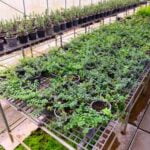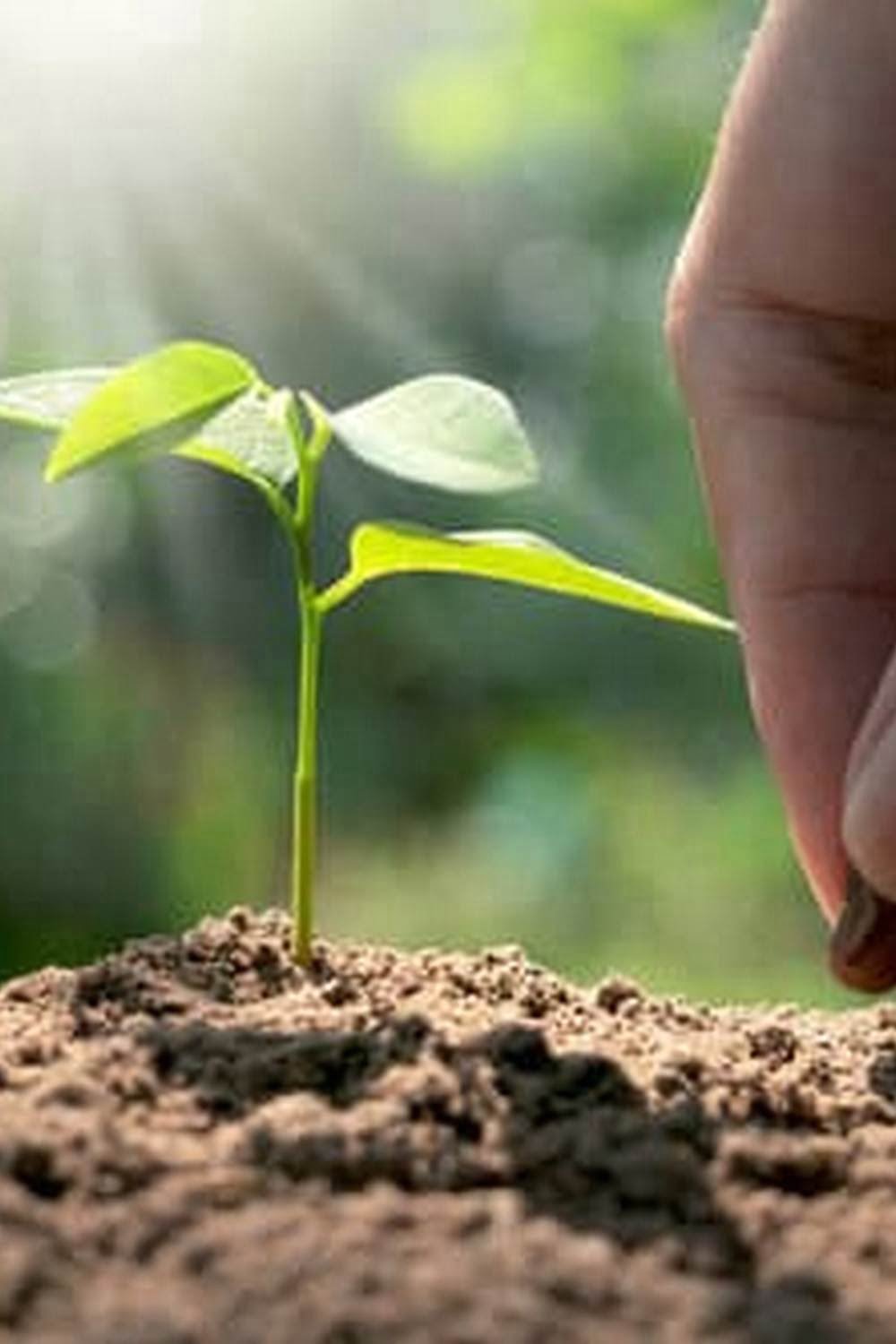Is Miracle Grow safe for vegetable gardens? This question has sparked a heated debate among gardeners and experts alike. Miracle Grow is a popular brand of fertilizer known for its ability to promote the growth of healthy and vibrant plants.
However, there have been concerns raised about the safety of using Miracle Grow on vegetable gardens. In this article, we will explore the controversy surrounding the use of Miracle Grow, examine its ingredients, review research and studies on its impact on vegetables, and provide real-life experiences of gardeners using this product.
Miracle Grow is widely used by gardeners to nourish their plants and help them thrive. It is known for its ability to provide essential nutrients that promote healthy growth and strong root development in plants. However, when it comes to using Miracle Grow in vegetable gardens, many people are cautious due to concerns about its safety and potential impact on the edibility of the produce.
In order to understand whether Miracle Grow is safe for vegetable gardens, it’s important to take a closer look at its ingredients and their impact on vegetables. Some gardeners have reported positive results from using Miracle Grow on their vegetable plants, while others have expressed concerns about chemical residues affecting the quality of the produce. This has led to a growing controversy over whether or not Miracle Grow should be used in vegetable gardens.
Understanding the Ingredients in Miracle Grow and Their Impact on Vegetables
Miracle Grow is a popular fertilizer that is widely used in gardens, including vegetable gardens, to promote plant growth and health. However, it is important for gardeners to understand the ingredients in Miracle Grow and their impact on vegetables before using this product.
The main ingredients in Miracle Grow include nitrogen, phosphorus, and potassium – essential nutrients for plant growth. These nutrients are highly concentrated in Miracle Grow, which can be beneficial for vegetables if used properly. However, overuse of Miracle Grow can lead to an imbalance of nutrients in the soil, negatively impacting the health and quality of vegetable plants.
To better understand the impact of Miracle Grow on vegetables, let’s take a look at the potential effects of its key ingredients:
- Nitrogen: Promotes leafy green growth in vegetables but can also lead to excessive foliage and reduced fruit production if not balanced properly.
- Phosphorus: Essential for healthy root development and flowering in vegetables. Without enough phosphorus, vegetable plants may struggle to produce quality fruits.
- Potassium: Aids in overall plant health and disease resistance in vegetables. However, too much potassium can interfere with calcium uptake, leading to potential issues such as blossom end rot in tomatoes and peppers.
It is important for gardeners to carefully consider the impact of these ingredients when using Miracle Grow on their vegetable gardens. Finding the right balance and using this fertilizer responsibly can help maximize its benefits while minimizing any potential negative effects on vegetable plants.
The Controversy Surrounding the Safety of Miracle Grow for Vegetable Gardens
Chemical Composition and Concerns
One of the main points of contention is the chemical composition of Miracle Grow. Some critics have pointed out that it contains high levels of synthetic nutrients, such as nitrogen, phosphorus, and potassium, which may pose potential risks to human health when consumed through vegetables grown using this fertilizer. Additionally, the presence of other additives and trace elements in Miracle Grow has also raised questions about their safety for edible plants.
Environmental Impact
Another aspect of the controversy revolves around the environmental impact of using Miracle Grow in vegetable gardens. Critics argue that the runoff from gardens treated with this fertilizer can contribute to water pollution and harm beneficial microorganisms in the soil. This concern has led to debates about whether using Miracle Grow aligns with sustainable gardening practices.
Weighing the Evidence
In considering these concerns, it is important to weigh the evidence from research and studies on the effects of Miracle Grow on vegetable plants. Some research has shown positive results in terms of increased yields and improved plant health, while other studies have indicated potential negative effects on soil quality and food safety. Overall, understanding the controversy surrounding Miracle Grow’s safety for vegetable gardens requires careful consideration of various perspectives and findings.
Research and Studies on the Effects of Miracle Grow on Vegetable Plants
Miracle-Gro is a popular brand of fertilizer used by many gardeners to promote plant growth and improve soil quality in their vegetable gardens. However, there has been some concern about the safety of using Miracle-Gro on edible plants due to its chemical composition. This has led to several research studies being conducted to determine the effects of Miracle-Gro on vegetable plants.
One study published in the Journal of Agricultural and Food Chemistry found that while Miracle-Gro can lead to increased crop yields, it also resulted in higher levels of certain heavy metals such as cadmium and lead in the vegetables. These heavy metals can pose health risks when consumed in large amounts, leading to concerns about the safety of using Miracle-Gro on vegetables that are meant for human consumption.
Another study conducted by the National Institute of Environmental Health Sciences found that prolonged use of fertilizers containing ammonium nitrate, a common ingredient in Miracle-Gro, may result in increased nitrate levels in plants. High nitrate levels in vegetables can be harmful to human health, particularly for young children and pregnant women, as it can interfere with the body’s ability to carry oxygen.
Overall, while research has shown that Miracle-Gro can have positive effects on the growth and yield of vegetable plants, there are also potential negative impacts related to its chemical composition. Gardeners should consider these findings when deciding whether or not to use Miracle-Gro in their vegetable gardens and take necessary precautions if they choose to do so.
| Study Findings | Impact |
|---|---|
| Increased levels of heavy metals | Potential health risks for consumers |
| High nitrate levels | Harmful effects on human health |
Real-Life Experiences of Gardeners Using Miracle Grow on Their Vegetable Gardens
Many gardeners have had positive experiences using Miracle Grow on their vegetable gardens. One common benefit reported by users is the significant growth and yield improvement in their vegetable plants after using Miracle Grow. The balanced mix of nutrients in Miracle Grow has been praised for promoting healthy, robust plants that produce a bountiful harvest.
Success Stories
Gardeners have shared success stories about using Miracle Grow to revive struggling vegetable plants, improve fruit and vegetable quality, and increase the overall productivity of their gardens. Some have even reported that their vegetables tasted better after using Miracle Grow compared to when they used other fertilizers or no fertilizer at all.
Increased Disease Resistance
Additionally, many gardeners have observed that their vegetable plants appeared more resistant to pests and diseases after using Miracle Grow. This may be attributed to the bolstering effect of the fertilizer on the overall health and vitality of the plants. As a result, some gardeners believe that using Miracle Grow has helped them reduce the need for chemical pesticides and fungicides in their gardens.
Overall, these real-life experiences highlight the potential benefits of incorporating Miracle Grow into a vegetable garden’s care routine. While there may be concerns about its safety, many gardeners continue to use it with positive results.
Alternatives to Miracle Grow for Those Concerned About Its Safety
When it comes to caring for vegetable gardens, many gardeners are concerned about the safety of using Miracle Grow due to its ingredients and potential impact on the vegetables. For those who are hesitant to use Miracle Grow, there are several alternatives that can be considered. Here are some options to consider:
- Organic fertilizers: Many gardeners opt for organic fertilizers, such as compost or manure, which offer natural nutrients for vegetable plants without the worry of chemical additives.
- Fish emulsion: This natural fertilizer is derived from fish waste and offers a rich source of nutrients for vegetables while being safe for the environment.
- Bone meal: Made from ground animal bones, bone meal is a natural source of phosphorus and calcium which can benefit vegetable plants without the use of synthetic chemicals.
In addition to these alternatives, some gardeners also choose to create their own homemade fertilizers using ingredients such as eggshells, coffee grounds, and seaweed. These natural options provide a safe and eco-friendly way to nourish vegetable gardens without the concerns associated with synthetic fertilizers like Miracle Grow.
As with any gardening practice, it’s essential to carefully research and consider the best options for your specific needs and concerns. By exploring alternative fertilizers that prioritize safety and natural ingredients, gardeners can make informed decisions that align with their values and goals for their vegetable gardens.
Tips for Using Miracle Grow Safely in Vegetable Gardens
When using Miracle Grow in vegetable gardens, it’s important to follow some tips to ensure the safety of your plants and the produce they yield. First and foremost, always read and follow the instructions on the Miracle Grow packaging. Using more fertilizer than recommended can result in over-fertilization, which can harm your plants and contaminate the soil.
Another tip for using Miracle Grow safely in vegetable gardens is to avoid applying the fertilizer directly onto the leaves or stems of the plants. Instead, carefully pour or sprinkle the Miracle Grow around the base of each plant. This will help prevent any potential burning or damage to the foliage.
Furthermore, consider using a diluted mixture of Miracle Grow when feeding your vegetable garden. This can help reduce the risk of over-fertilization while still providing essential nutrients to your plants. Additionally, it’s advisable to water your vegetable garden thoroughly after applying Miracle Grow to help distribute the fertilizer evenly and minimize any potential concentration of chemicals in one area.
By following these tips for using Miracle Grow safely in vegetable gardens, you can continue to benefit from its effectiveness as a fertilizer while minimizing any potential risks to your plants and produce. Remember that proper application and moderation are key when using any type of fertilizer in a home garden setting.
Conclusion
In conclusion, the safety of using Miracle Grow in vegetable gardens is a topic that continues to spark debate among gardeners and experts. While some argue that the ingredients in Miracle Grow may have harmful effects on vegetables and the environment, others believe that when used properly, it can be an effective and safe way to nourish vegetable plants. The controversy surrounding this issue emphasizes the importance of making informed decisions as gardeners.
When weighing the pros and cons of using Miracle Grow in vegetable gardens, it is crucial to consider the research and studies available on the topic. Understanding the impact of each ingredient in Miracle Grow on vegetable plants can help gardeners make an informed decision about whether or not to use this product. Real-life experiences from other gardeners who have used Miracle Grow can also provide valuable insights into its effectiveness and potential risks.
For those who are concerned about the safety of Miracle Grow for their vegetable gardens, there are alternatives available. Organic fertilizers and homemade compost are popular choices for those seeking more natural and environmentally friendly options.
Additionally, following tips for using Miracle Grow safely in vegetable gardens, such as diluting the product properly and avoiding overuse, can help minimize any potential risks associated with its use. Ultimately, making an informed decision about whether to use Miracle Grow in a vegetable garden requires careful consideration of all these factors.
Frequently Asked Questions
Can I Use Miracle Grow in My Vegetable Garden?
Yes, you can use Miracle-Gro in your vegetable garden. Miracle-Gro is a popular fertilizer that can be used on various types of vegetables to help them grow and thrive. It provides essential nutrients to the plants, promoting healthy growth and bountiful harvests.
Can You Eat Vegetables After Miracle-Gro?
Yes, you can eat vegetables after using Miracle-Gro. When used as directed, Miracle-Gro should not pose any harm to humans if consumed through the consumption of vegetables grown in soil treated with its fertilizer. However, it’s important to follow the instructions on the label and avoid applying excessive amounts of the product.
Is Miracle Grow Safe for Tomatoes?
Yes, Miracle-Gro is safe for tomatoes when applied according to the instructions on its label. Tomatoes are among the many plants that benefit from the nutrients provided by Miracle-Gro fertilizers.
When used correctly, it can help tomatoes grow vigorously and produce flavorful fruits. As with any fertilizer, it’s important to follow the recommended application rates to ensure the safety and health of your plants.

If you’re looking to get into vegetable gardening, or are just looking for some tips on how to make your current garden better, then you’ve come to the right place! My name is Ethel and I have been gardening for years. In this blog, I’m going to share with you some of my best tips on how to create a successful vegetable garden.





